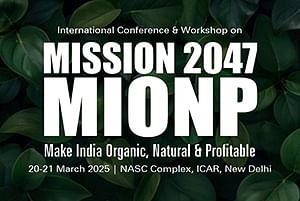
Periwinkle, or Catharanthus roseus, is a perennial evergreen shrub celebrated for its ornamental beauty and remarkable medicinal properties. Known by various names across different regions—such as Periwinkle in English, Sadabahar in Hindi, Nityapushpa in Kannada, and Sadapushpa in Sanskrit—this plant has been integral to traditional medicine and is now a crucial component in modern pharmaceutical applications. In India, Periwinkle is cultivated across approximately 3000 hectares in states such as Tamil Nadu, Karnataka, Andhra Pradesh, Madhya Pradesh, Gujarat, and Assam. Farmers favor this plant due to its versatility, capacity to thrive on marginal lands, and drought resistance, which minimizes the risk of crop failure. Here’s an in-depth look at Periwinkle's medicinal benefits and cultivation practices.
Growth and Economic Parts
Periwinkle grows to a height of 90-100 cm, characterized by its vibrant green foliage and delicate flowers. The entire plant, including its leaves, stem, seeds, and roots, holds economic value due to its diverse medicinal applications.
Medicinal Uses
Periwinkle is renowned for its hypotensive and antispasmodic properties. It is used to treat several serious medical conditions, including:
-
Acute Leukemia: The plant contains alkaloids like vincristine and vinblastine, which are used in chemotherapy for acute leukemia.
-
Hodgkin’s Disease: These alkaloids are also effective in treating Hodgkin’s disease and other lymphomas, providing critical cancer treatment options.
-
ChorioCarcinomas: The plant’s compounds are used in treating choriocarcinomas, a type of cancer that occurs in the uterus.
Herbal Preparations
The potent medicinal properties of Periwinkle have led to the creation of several commercial drugs, such as:
-
Oncovin: Used in cancer treatment, particularly for leukemia.
-
Velbe: Another cancer treatment drug derived from Periwinkle.
-
Vinca Leukoblastine: Used in treating various types of cancers.
These drugs are essential in the medical field, showcasing the importance of Periwinkle in modern healthcare.
Cultivation Practices
-
Varieties: Several varieties of Periwinkle have been developed to enhance medicinal properties and yield Nirmal, Dhawal, Prabal and Prabhat. These varieties are cultivated for their robustness and improved medicinal qualities.
-
Climate: Periwinkle thrives in tropical and sub-tropical climates up to an elevation of 1300 meters above sea level. Ideal growth conditions include well-distributed rainfall of 100 cm or more, which ensures the plant receives adequate water throughout its growth cycle.
-
Soil: The plant prefers deep sandy loam to loam soils with medium fertility. These soil types offer good drainage and the right balance of nutrients necessary for optimal growth.
-
Propagation: Periwinkle can be propagated through seeds or cuttings. For direct sowing, 2.5 kg of seeds per hectare is required, while for transplanting, 500 g of seeds per hectare suffices. Softwood cuttings, 10-15 cm long with a minimum of 5-6 nodes, are ideal for planting.
-
Spacing and Planting: Seeds can be either directly sown or transplanted. Direct sowing should align with the monsoon season in July. For transplanting, 2-month-old seedlings are planted at a spacing of 45x30 cm. This spacing ensures that each plant has sufficient room to grow and access resources.
-
Manuring: To support healthy plant growth, 10-15 tonnes of farmyard manure (FYM) per hectare is recommended. FYM enriches the soil with organic matter, providing essential nutrients that enhance plant growth and yield.
-
Harvesting and Yield: Periwinkle is harvested for its leaves and roots at different stages: (1) Leaves: Harvested at 6 and 9 months after planting. (2) Roots: Harvested 12 months after planting.
The plant yields a significant quantity of medicinal material, and the average market price for dried leaves and roots is Rs 100 per kilogram. This makes Periwinkle a lucrative crop for farmers, offering substantial economic benefits.

















